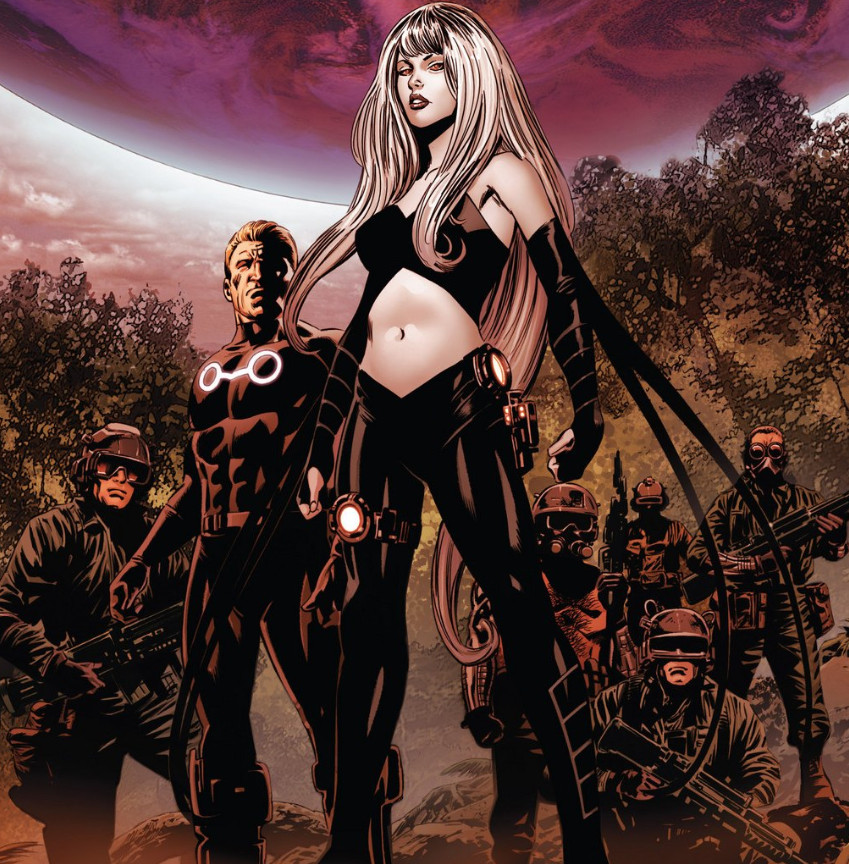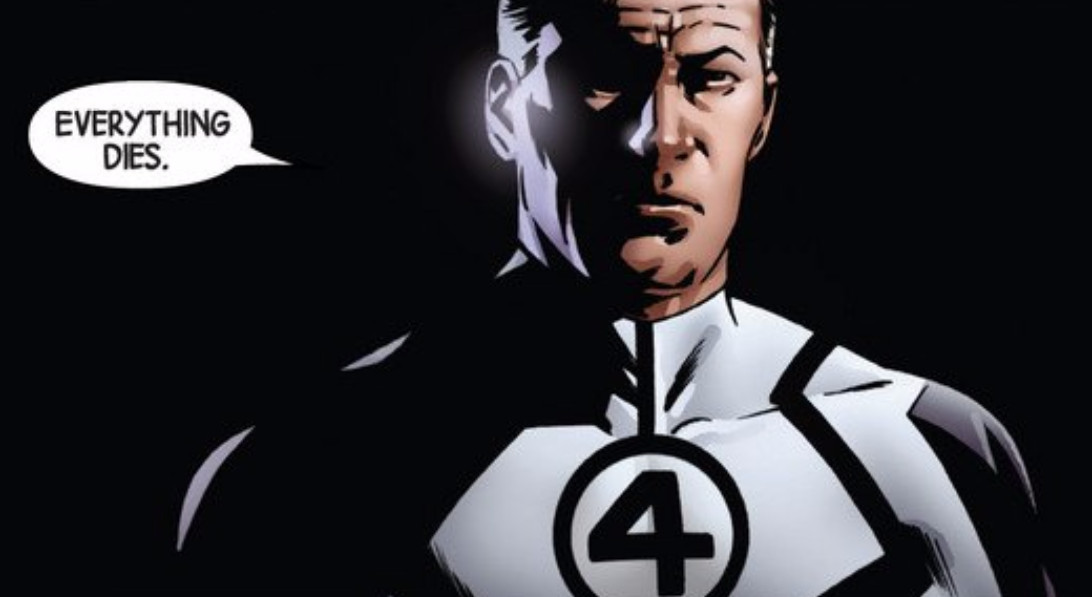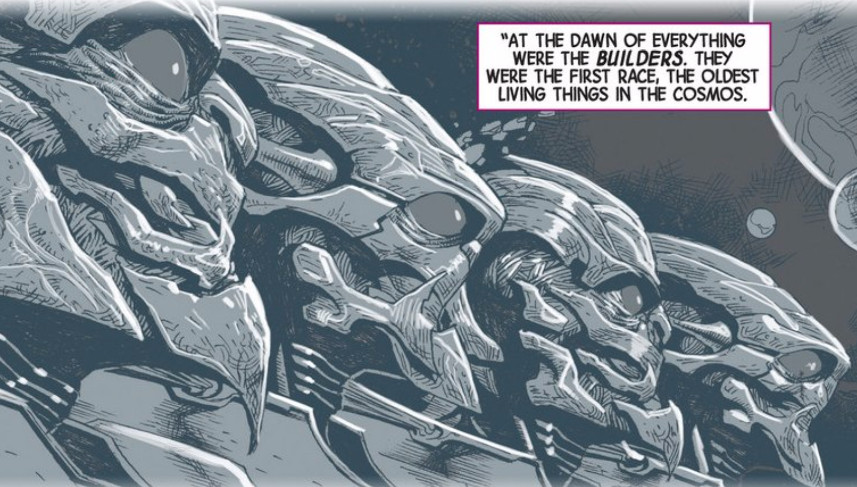A Marvel Epic: Part 2 – The Start of the Tale
This week I resume the detailed look at Jonathan Hickman’s architecture for the Everything Dies storyline in which he orchestrated the massive end and reboot of the Marvel publication universe. As discussed in Part 1, the genre that best fits what Hickman engineered is the epic. Epics, by nearly universal agreement, need to be big in scope and have high-stakes outcomes and have to deal with the big questions of life.
Classic epics have dealt with the savage siege and subsequent fall of Troy in the Iliad, the long, world-encircling journey home of Odysseus in the Odyssey, and the establishment of the roots of the Roman empire in the Aeneid. But no scope is broader than and no stakes higher than the total end of all there is. And that is exactly what Hickman deals with in Everything Dies.
The plot is complicated, in a fashion that befits the epic, but it is possible to summarize it fairly succinctly and I’ll be doing so over the next three posts. The central idea, which was discussed in the last column, is the fact that, for reasons mostly unknown during the bulk of the story, the multiverse is coming to a premature end. Although published second, the New Avengers is the logical place to start.
The first tangible evidence of the coming catastrophe occurs in the African country of Wakanda. The Black Panther is out in the Wakandan jungle observing a ‘coming of age’ ritual in which teams of young adults attempt to solve a treasure hunt. Proud of the winning team, T’Challa approaches them and speaks to them of what the future holds. Suddenly, a rhinoceros appears out of nowhere and nearly runs the lot of them down. Investigating, the Black Panther soon finds himself caught up in an incursion, a multiversal collision between Earth-616 and another Earth from another universe. As he looks up into the sky, he sees several figures fall from the other Earth and he catches his first look at a character that will dominate the storyline: Black Swan.
Being quite ruthless, Black Swan soon orders her team to kill T’Challa and his young subjects. In short order, only the Black Panther remains alive and while he is fighting to avenge the fallen, Black Swan takes the opportunity to destroy the second Earth, thus ending the incursion.
Taking her into custody, T’Challa summons a gathering of the Illuminati, comprised initially of Black Bolt, himself, Captain America, Doctor Strange, Iron Man, Namor the Sub-Mariner, and Reed Richards. Their first meeting opens on the ominous observation by Reed Richards that
It becomes even more ominous when Richard explains the central dilemma of their situation. They can either kill or be killed. They have only eight hours to pick between the two possible outcomes.
Captain America, repulsed by the notion that the rest of the Illuminati are actually entertaining the possibility of destroying a whole planet to stay alive, argues passionately that there must be a way to get out of the dilemma without crossing that line. Under his urging, they resolve to reassemble the Infinity Gauntlet as a way of fending off an incursion. At first this seems like a hopeless task as the Mind Gem is missing because it was in the keeping of Charles Xavier and he was dead. Fortunately, Xavier arranged for Hank McCoy, the Beast, to become the keeper of the gem, and soon the ranks of the Illuminati have grown by one.
Shortly after the Infinity Gauntlet has been restored, a new incursion begins. Citing that belief in the plan is central to its success, the rest of the Illuminati insist that Captain America wield the gauntlet and fend off the end of the world. He successfully does just that, but in the process the gems are shattered and their power lost.
(The above is a composite of the Infinity Gems from New Avengers #3 and yes the color scheme for the gems changes during the course of the issue. I don’t know if that was an oversight or intentional, a point that I will return to later.)
Now faced with no answer but the unthinkable, the Illuminati wipe the memory of Captain America clean of all traces of the death of the multiverse and then they set on the path of building world-ending weapons of mass destruction.
Against the backdrop of this facet of the story, the Avengers title presents an unusual collaboration between Tony Stark and Steve Rogers. Perhaps feeling guilty for what they did to Captain America, Tony Stark embraces Steve’s idea to grow the Avengers to a team truly capable of dealing with the big threats.
The first such threat is the appearance on Mars of the team of three aliens: an Aleph, an Ex Nihilo, and an Abyss. There is considerable debate amongst the three of them as the Aleph wants the Earth destroyed while the Ex Nihilo, who has already terraformed a portion of the red planet into lush garden, would rather send origin bombs towards the Earth to transform it.
Ex Nihilo then asks Abyss her opinion. Her response is that humans have learned to use tools and, as a result, have become dangerous creatures. She continues by pointing out that a group of them are on the way to find the source of the origin bombs that are radically altering the Earth’s biosphere.
A short battle ensues, in which the Avengers are soundly defeated as the power of these aliens is too much for them. As will be revealed later in the series, they are representatives of the Builders, the first race of the universe
Originally they simply worshipped the ‘mother-maker’, the universe itself. But later they fell away and took it upon themselves to create new, universal systems of a more aggressive character that promoted evolution and change. The Aleph is one such system. This automaton destroyed countless worlds it judged as unworthy, but finding one worthy world, it released two entities, Ex Nihilo and Abyss, to nurture and shape it.
Bruised and battered, the alien trio sends Captain America hurtling earthward. However, his indomitable spirit soon has him on his feet again, gathering a different team, and heading to Mars to rescue those left in the clutches of Ex Nihilo, Abyss, and Aleph. One member of the team is Captain Universe, the living embodiment of the universe, and the deity that the Builders once worshipped. Once spotted, both Ex Nihilo and Abyss bow in worship but Aleph refuses. Captain Universe subsequently destroys him and forbids Ex Nihilo and Abyss to destroy or transform any more inhabited worlds. Ex Nihilo and Abyss comply and are granted permission to stay and play with Mars.
As the Avengers are leaving to return to the Earth to contend with the damage already done, Ex Nihilo can’t suppress asking a question of wonderment.
This question of what makes Earth so special is one that Hickman comes back to again and again, Avengers can’t defeat them but they convince them to play only with Mars.
These two pieces, the incursion-driven multiversal death and the universes response to this inevitable occurrence, form the backbone of the New Avengers and Avengers titles respectively during their run. Next week, I’ll be looking at the second stage of the tale, in which tensions mount in the Illuminati as they try to muster the will to kill an entire world, and the Builders, seeing the Earth as the lynch pin in the coming destruction, launch an all-out campaign to destroy the blue marble once and for all. This second stage includes all the events in both titles leading up to and including the Infinity event.










